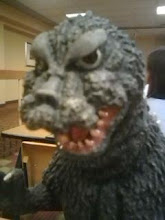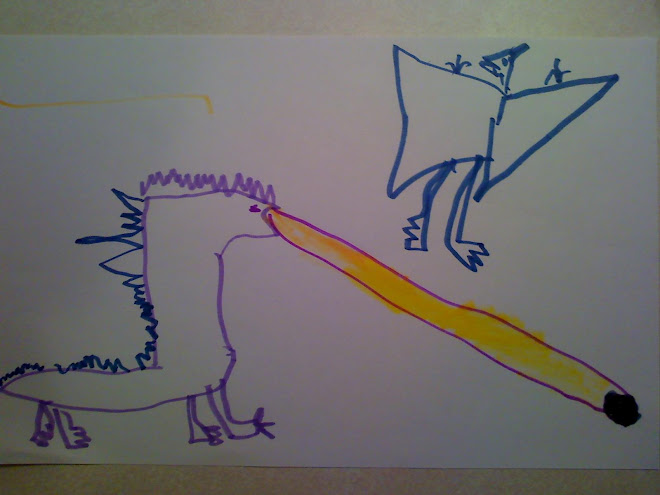
Strange as it is to admit, the "Icons of Sci-Fi: Toho Collection" has given me my first exposure to Mothra. It was worth the thirty-some-odd-year wait. I do not think I am overstating it when I say that Mothra is a masterpiece. A unique convergence of talent and imagination, Mothra must be included in the discussion of the greatest kaiju movies ever.
The story is at once simple and thematically rich; an unscrupulous Carl Denham-type kidnaps twin fairy-sized girls from a mysterious island. In response to their telepathic cries, Mothra comes to Japan to rescue them. This rescue mission will involve mass destruction, but unlike Godzilla (and almost any other kaiju) Mothra's motivation is noble. That Mothra is to be taken as a type of savior is made fairly explicit by the repeated use of Christian imagery. That is not to say that Mothra was ever intended as Christian allegory--although Mothra does die (as a larva in a cocoon) and rise again (as a kaiju moth) in order to save the "Little Beauties." At the very least, Mothra is invested with salvific qualities, resulting in a film that, while employing them, also transcends standard "monster-on-the-loose" conventions.
Enhancing the thought-provoking plot is an excellent cast. The list of players reads like a Toho kaiju eiga "Who's Who," with Akhiko Hirata, Takashi Shimura, and Kenji Sahara in small supporting roles. However, the featured roles are occupied by actors not necessarily typical to monster films, giving the human story of Mothra a noticable vitality.
Jerry Ito's performance as villain Clark Nelson is dynamic, and apparently against type--he was a beloved, multifaceted, successful entertainer. Frankie Sakai comes close to stealing the show as comedic (and heroic) reporter "Snapping Turtle" ("Bulldog" in the American dub) Fukuda, and has an unforced, respectful chemistry with his photographer partner, played by Kyoko Kagawa. Hiroshi Koizumi is convincing as the morally upright linguist Dr. Chujo. And then there's Emi and Yumi Ito, who lend the "Little Beauties" a sincere, otherworldy quality that makes it easy to accept the fantastic nature of their characters.
Speaking of the "Shobijin," one cannot deny that among the many other things that it is, Mothra is also a musical. The decision to have Mothra scored by Yuji Koseki and not Akira Ifukube was wise; the deliverer queen of Infant Island required lighter, more graceful musical accompaniment than the awesome dissonant thunder Ifukube created for Godzilla. The "Mothra Song" is still a showstopper 48 years later, not to mention that, as it invokes the assistance of a gigantic, sentient moth, is wholly unlike any song ever featured in a major motion picture.
Then there are the visual effects. While a few scenes strain "suspension of disbelief" to the breaking point, the vast majority of effects are quite believable, and, more significantly, some are indistinguishable as "special effects." With the exception of two brief moments during their abduction, the Little Beauties blend seamlessly into their surroundings. The number, variety, and scope of the miniature sets are astounding. Most crucially, Mothra is distressing in larval form and majestic in flight; a creature of both vengeance and grace.
Don't wait as long as I did to see Mothra. It is entertainment on a grand scale, filled with an unapologetic sense of wonder. Bold and colorful; at turns thoughtful, awe-inspiring and humorous, Mothra re-imagined what a monster movie could be.


































































You are right, Jerry Ito's performance was dynamic. This was the first time I've seen the Japanese version of "Mothra" and seeing and hearing Ito's performance made me even more impressed with him.
ReplyDelete